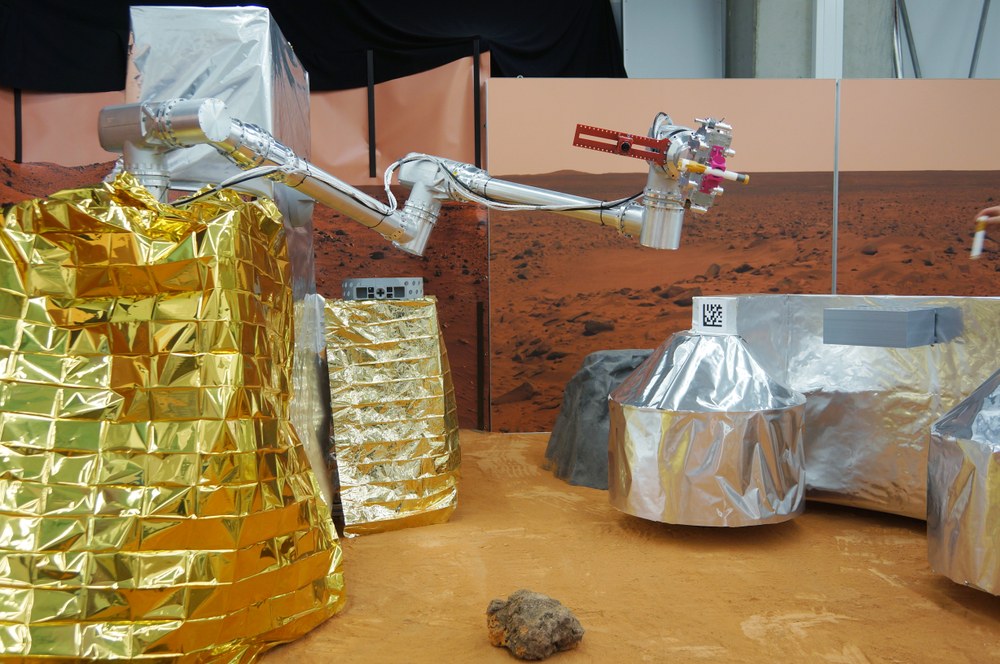TINA

TINA is an acronym for "This-Is-Not-an-Arm" and represents a technology carrier that can be used as a small modular arm in space. With a range of 30cm to 2m, it is ideal for use on small satellites in ISAM (In-Space-Assembly-Manufacturing) applications, for supporting and collaborating with astronauts in space stations and for exploring the Moon and Mars. The system was presented for the first time at the Space Symposium in 2019.
Technical data
Size: | 0,3m — 2,5m |
Weight: | 10kg — 30kg |
Sensors: |
|
Features: |
|
System description
The electronics of the TINA demonstrator are based on the Universal Motor Controller (UMC), which has already been used in the successful MASCOT space project. The mechanical joints of the arm are based on the findings of the ROKVISS robot, which has been successfully conducting its experiments on the outside of the ISS for several years. TINA technology has already been used in the STABLE (Sample Transfer Arm Breadboard and Lander Evaluation) project. There, a seven-axis arm was assembled from TINA technology and mounted on a Mars Sample Return Lander mockup to collect and clean the samples from the Perseverance Rover and then transport them back to Earth in a planned future mission. This project was developed for the ESA and ended up as an engineering model. The robot will continue to be used for Surface Avatar, where the robot is also mounted on a lander mock-up on Earth and controlled remotely from the ISS. In addition, the TINA technology was used for the concept design of a "station butler" to support astronauts in their work in space stations. This includes assisting during experiments or monotonous work. A version of the TINA robot is to be used in a simulated lunar greenhouse as part of the DLR Luna project to monitor plants and carry out gardening work. The TINA technology will also be used for the SpaceDREAM mission. The robotic demonstrator will be mounted on the upper stage of a rocket. The aim of the mission is to detect a target object with the cameras mounted on the robot and perform a docking manoeuvre to the target.
Publications
- Maximilian Maier, Thomas Bahls, Ralph Bayer, Markus Bihler, Maxime Chalon, Werner Friedl, Nils Hoeger, Cynthia Hofmann, Alexander Kolb, Ashok Meenakshi Sundaram, Martin Pfanne, Hans-Jürgen Sedlmayr, Niolaus Seitz, "TINA: The Modular Torque Controlled Robotic Arm - A Study for Mars Sample Return," 2021 IEEE Aerospace Conference (50100), Big Sky, MT, USA, pp. 1-10, 2021 [elib]
- Maximilian Maier, Ralph Bayer, Maxime Chalon, Manuel Maria Mascarenhas, Anton Leonhard Shu, Martin Pfanne, Hans-Jürgen Sedlmayr, "TINA: small torque controlled robotic arm for exploration and small satellites", Proceedings of the International Astronautical Congress, IAC. International Astronautical Congress, Washington D.C., 21-25 October 2019 [elib]


